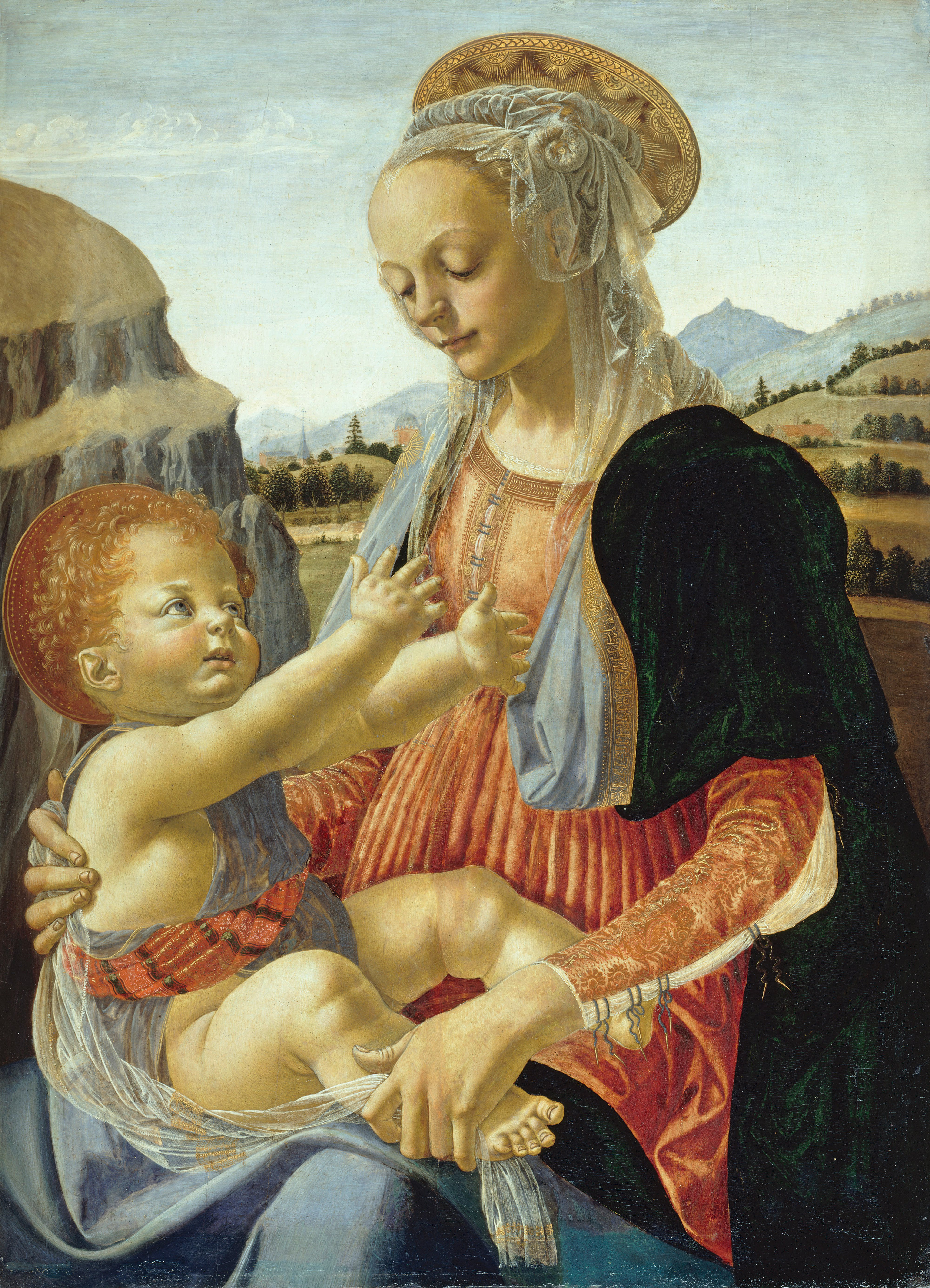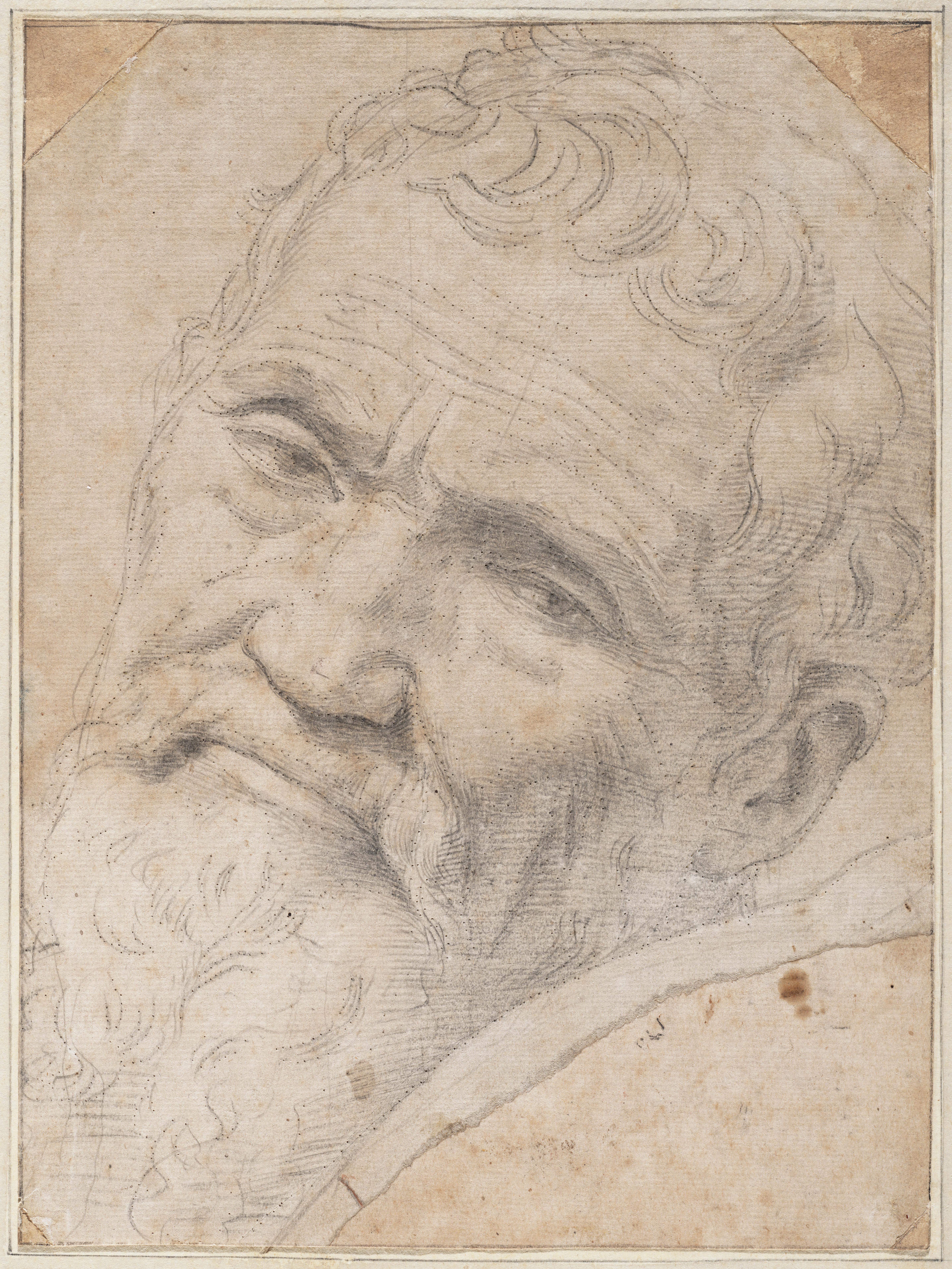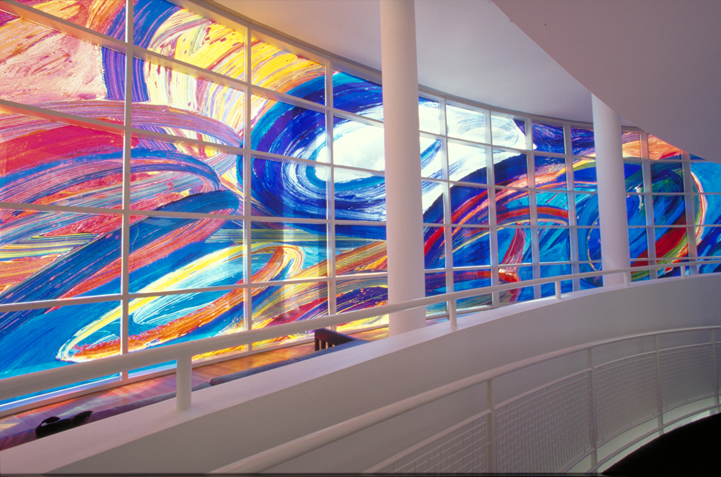|
David (Verrocchio)
Andrea del Verrocchio's bronze statue of ''David'' was most likely made between 1473 and 1475. It was commissioned by the Medici family. It is sometimes claimed that Verrocchio modeled the statue after his pupil Leonardo da Vinci. The statue represents the youthful David, future king of the Israelites, triumphantly posed over the head of the slain Goliath. The bronze was initially installed in Palazzo Vecchio in 1476. The ornament on David's leather tunic includes pseudo-Kufic letters imitating Arabic script. The placement of Goliath's head has been a source of some debate for art historians. When exhibited at the National Gallery of Art, the head was placed between David's feet, as is the case in the statue's permanent home, the National Museum of the Bargello, in Florence, Italy. Another school of art historians have suggested that Verrocchio intended for Goliath's head to be placed to David's right, pointing to the diagonals of the ensemble. This placement was temporaril ... [...More Info...] [...Related Items...] OR: [Wikipedia] [Google] [Baidu] |
Andrea Del Verrocchio
Andrea del Verrocchio (, , ; – 1488), born Andrea di Michele di Francesco de' Cioni, was a sculptor, Italian painter and goldsmith who was a master of an important workshop in Florence. He apparently became known as ''Verrocchio'' after the surname of his master, a goldsmith. Few paintings are attributed to him with certainty, but a number of important painters were trained at his workshop. His pupils included Leonardo da Vinci, Pietro Perugino and Lorenzo di Credi. His greatest importance was as a sculptor and his last work, the Equestrian statue of Bartolomeo Colleoni in Venice, is generally accepted as a masterpiece. Life Verrocchio was born in Florence in around 1435. His father, Michele di Francesco Cioni, initially worked as a tile and brick maker, then later as a tax collector. Verrocchio never married, and had to provide financial support for some members of his family. He was at first apprenticed to a goldsmith. It has been suggested that he was later apprenticed t ... [...More Info...] [...Related Items...] OR: [Wikipedia] [Google] [Baidu] |
Pseudo-Kufic
Pseudo-Kufic, or Kufesque, also sometimes Pseudo-Arabic, is a style of decoration used during the Middle Ages and the Renaissance, Encyclopaedia BritannicaBeautiful Gibberish: Fake Arabic in Medieval and Renaissance Art/ref> consisting of imitations of the Arabic Kufic script, or sometimes Arabic cursive script, made in a non-Arabic context: "Imitations of Arabic in European art are often described as pseudo-Kufic, borrowing the term for an Arabic script that emphasizes straight and angular strokes, and is most commonly used in Islamic architectural decoration".Mack, p.51 Pseudo-Kufic appears especially often in Renaissance art in depictions of people from the Holy Land, particularly the Virgin Mary. It is an example of Islamic influences on Western art. Early examples Some of the first imitations of the Kufic script go back to the 8th century when the English King Offa (r. 757–796) produced gold coins imitating Islamic dinars. These coins were copies of an Abbasid dinar stru ... [...More Info...] [...Related Items...] OR: [Wikipedia] [Google] [Baidu] |
1475 Sculptures
Year 1475 ( MCDLXXV) was a common year starting on Sunday (link will display the full calendar) of the Julian calendar. Events January–December * January 10 – Battle of Vaslui ( Moldavian–Ottoman Wars): Stephen III of Moldavia defeats the Ottoman Empire, which is led at this time by Mehmed the Conqueror of Constantinople. * July 4 – Burgundian Wars: Edward IV of England lands in Calais, in support of the Duchy of Burgundy against France. * August 29 – The Treaty of Picquigny ends the brief war between France and England. * November 13 – Burgundian Wars – Battle on the Planta: Forces of the Old Swiss Confederacy are victorious against those of the Duchy of Savoy, near Sion, Switzerland. * November 14 – The original Landshut Wedding takes place, between George, Duke of Bavaria, and Hedwig Jagiellon. * December – The Principality of Theodoro falls to the Ottoman Empire, arguably taking with it the final remnant of the successo ... [...More Info...] [...Related Items...] OR: [Wikipedia] [Google] [Baidu] |
Bronze Sculptures In Italy
Bronze is an alloy consisting primarily of copper, commonly with about 12–12.5% tin and often with the addition of other metals (including aluminium, manganese, nickel, or zinc) and sometimes non-metals, such as phosphorus, or metalloids such as arsenic or silicon. These additions produce a range of alloys that may be harder than copper alone, or have other useful properties, such as strength, ductility, or machinability. The archaeological period in which bronze was the hardest metal in widespread use is known as the Bronze Age. The beginning of the Bronze Age in western Eurasia and India is conventionally dated to the mid-4th millennium BCE (~3500 BCE), and to the early 2nd millennium BCE in China; elsewhere it gradually spread across regions. The Bronze Age was followed by the Iron Age starting from about 1300 BCE and reaching most of Eurasia by about 500 BCE, although bronze continued to be much more widely used than it is in modern times. Because historical artworks wer ... [...More Info...] [...Related Items...] OR: [Wikipedia] [Google] [Baidu] |
Sculptures Depicting David
Sculpture is the branch of the visual arts that operates in three dimensions. Sculpture is the three-dimensional art work which is physically presented in the dimensions of height, width and depth. It is one of the plastic arts. Durable sculptural processes originally used carving (the removal of material) and modelling (the addition of material, as clay), in stone, metal, ceramics, wood and other materials but, since Modernism, there has been an almost complete freedom of materials and process. A wide variety of materials may be worked by removal such as carving, assembled by welding or modelling, or moulded or cast. Sculpture in stone survives far better than works of art in perishable materials, and often represents the majority of the surviving works (other than pottery) from ancient cultures, though conversely traditions of sculpture in wood may have vanished almost entirely. However, most ancient sculpture was brightly painted, and this has been lost. [...More Info...] [...Related Items...] OR: [Wikipedia] [Google] [Baidu] |
Victoria & Albert Museum
The Victoria and Albert Museum (often abbreviated as the V&A) in London is the world's largest museum of applied arts, decorative arts and design, housing a permanent collection of over 2.27 million objects. It was founded in 1852 and named after Queen Victoria and Prince Albert. The V&A is located in the Royal Borough of Kensington and Chelsea, in an area known as "Albertopolis" because of its association with Prince Albert, the Albert Memorial and the major cultural institutions with which he was associated. These include the Natural History Museum, the Science Museum, the Royal Albert Hall and Imperial College London. The museum is a non-departmental public body sponsored by the Department for Digital, Culture, Media and Sport. As with other national British museums, entrance is free. The V&A covers and 145 galleries. Its collection spans 5,000 years of art, from ancient times to the present day, from the cultures of Europe, North America, Asia and North Africa. ... [...More Info...] [...Related Items...] OR: [Wikipedia] [Google] [Baidu] |
High Museum
The High Museum of Art (colloquially the High) is the largest museum for visual art in the Southeastern United States. Located in Atlanta, Georgia (on Peachtree Street in Midtown, the city's arts district), the High is 312,000 square feet (28,985 m2) and a division of the Woodruff Arts Center. The High organizes and presents exhibitions of international and national significance alongside its comprehensive collection of more than 18,000 works of art, and is especially known for its 19th- and 20th-century American decorative arts, folk and self-taught art, modern and contemporary art, and photography. A cultural nexus of Atlanta since 1905, it hosts festivals, live performances, public conversations, independent art films, and educational programs year-round. It also features dedicated spaces for children of all ages and their caregivers, an on-site restaurant, and a museum store. In 2010, it had 509,000 visitors, 95th among world art museums. History The museum was foun ... [...More Info...] [...Related Items...] OR: [Wikipedia] [Google] [Baidu] |
National Gallery Of Art
The National Gallery of Art, and its attached Sculpture Garden, is a national art museum in Washington, D.C., United States, located on the National Mall, between 3rd and 9th Streets, at Constitution Avenue NW. Open to the public and free of charge, the museum was privately established in 1937 for the American people by a joint resolution of the United States Congress. Andrew W. Mellon donated a substantial art collection and funds for construction. The core collection includes major works of art donated by Paul Mellon, Ailsa Mellon Bruce, Lessing J. Rosenwald, Samuel Henry Kress, Rush Harrison Kress, Peter Arrell Browne Widener, Joseph E. Widener, and Chester Dale. The Gallery's collection of paintings, drawings, prints, photographs, sculpture, medals, and decorative arts traces the development of Western Art from the Middle Ages to the present, including the only painting by Leonardo da Vinci in the Americas and the largest mobile created by Alexander Calder. The Gall ... [...More Info...] [...Related Items...] OR: [Wikipedia] [Google] [Baidu] |
Artibus Et Historiae
''Artibus et Historiae'' is a semi-annual publication of art historical research published by IRSA (Institute for Art Historical Research) since 1980. It is a scholarly peer review journal embracing a broad range of topics within the field of art history; however, it aims to address interdisciplinary connections at the peripheries of art and other humanistic fields, such as psychology, sociology, philosophy, or literature. It appears twice a year, in hardback. The articles are in one of four languages: English, Italian, German, or French ''Artibus et Historiae'' is indexed in the Bibliography of the History of Art (BHA) and its articles are deposited in electronic form accessible through JSTOR. Title and Logo ''Artibus et Historiae'' takes its title from the private experiences of its founder and editor-in-chief, Polish art historian Dr. hab. Józef Grabski. "Artibus" is an inscription on the fronton of an old and very prestigious art exhibition hall, "Zachęta The Zachęta Nat ... [...More Info...] [...Related Items...] OR: [Wikipedia] [Google] [Baidu] |
Arabic Script
The Arabic script is the writing system used for Arabic and several other languages of Asia and Africa. It is the second-most widely used List of writing systems by adoption, writing system in the world by number of countries using it or a script directly derived from it, and the third-most by number of users (after the Latin script, Latin and Chinese characters, Chinese scripts). The script was first used to write texts in Arabic, most notably the Quran, the holy book of Islam. With the religion's spread, it came to be used as the primary script for many language families, leading to the addition of new letters and other symbols. Such languages still using it are: Persian language, Persian (Western Persian, Farsi/Dari), Malay language, Malay (Jawi alphabet, Jawi), Uyghur language, Uyghur, Kurdish languages, Kurdish, Punjabi language, Punjabi (Shahmukhi), Sindhi language, Sindhi, Balti language, Balti, Balochi language, Balochi, Pashto, Luri language, Lurish, Urdu, Kashmiri lang ... [...More Info...] [...Related Items...] OR: [Wikipedia] [Google] [Baidu] |
Tunic
A tunic is a garment for the body, usually simple in style, reaching from the shoulders to a length somewhere between the hips and the knees. The name derives from the Latin ''tunica'', the basic garment worn by both men and women in Ancient Rome, which in turn was based on earlier Greek garments that covered wearers' waists. Ancient era Indian tunic Indus valley civilization figurines depict both women and men wearing a tunic-like garment. A terracotta model called Lady of the spiked throne depicts two standing turban-wearing men wearing what appears to be a conical gown marked by a dense series of thin vertical incisions that might suggest stiffened cloth. A similar gold disc in the al-Sabah Collection from the Kuwait National Museum appears to be from the Indus Valley civilization depicts similar conical tunic-wearing men holding two bulls by their tails under a pipal tree shown in an Indus-like mirror symmetry. A mother goddess figurine from the National Museum new De ... [...More Info...] [...Related Items...] OR: [Wikipedia] [Google] [Baidu] |









